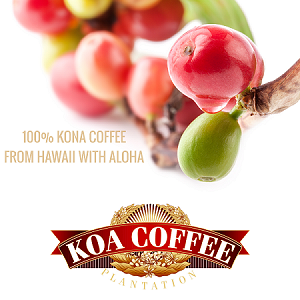The magic behind your favorite café beverages lies subtly beneath the surface: it’s the delicate dance of microfoam milk. This unsung hero, responsible for the artistry of lattes and cappuccinos and innovations seen in coffee competitions, profoundly shapes the modern café culture.
Our comprehensive guide will take you through the intriguing science of achieving that impeccable foam consistency, the intricate play of milk’s composition and temperature, and the mysteries of how fat content determines foam stability. Journey with us around the world as we uncover unique microfoam-infused drinks and the newest trends and techniques. Grab your favorite frothy concoction, and embark on this exploration into coffee’s smooth and silky companion.
Microfoam Milk: Key Takeaway
- Mastering the Science: Creating the perfect microfoam involves understanding milk’s composition, temperature, and fat content. Knowing how these factors interact helps you produce that silky, velvety foam.
- Tools and Techniques Matter: From choosing the right steam wand to understanding the correct angles, depth, and motion, the equipment and methods you use are critical in achieving high-quality microfoam milk.
- Versatility in Beverages: Microfoam isn’t just for coffee; it plays a role in various other drinks, making it a versatile element in modern café culture.
- Signature of Skill: In professional circles, the quality of microfoam serves as a barista’s signature, reflecting their level of expertise. It’s also a key component in coffee competitions, setting the standards for excellence.
- Evolving Trends: Microfoam is continuously innovating, from new ways to create it to finding the best milk for microfoam. It remains a dynamic and integral part of the café experience.
What is Microfoam Milk?
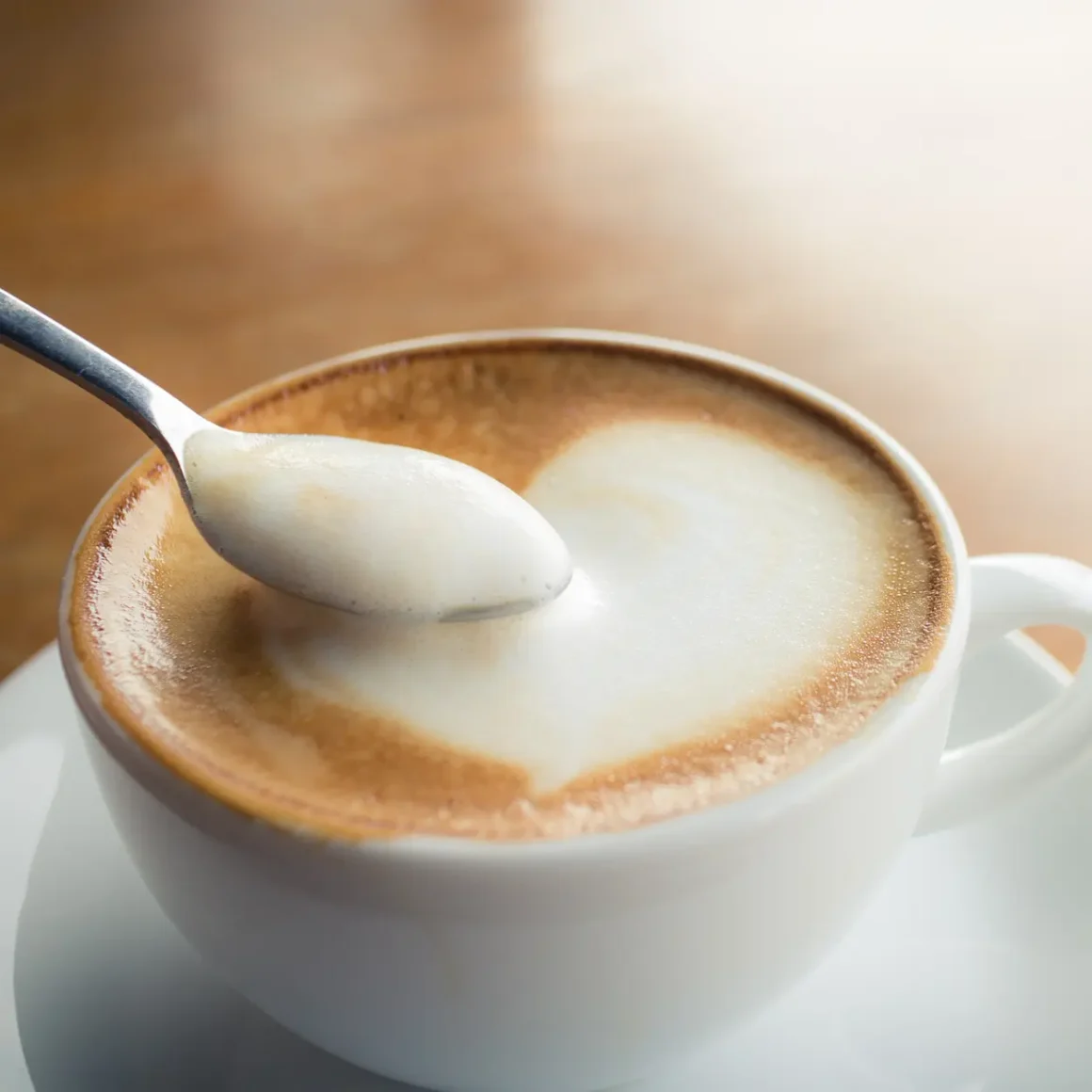
Microfoam milk is a specialized form of aerated milk crafted to elevate the experience of espresso drinks, especially those adorned with latte art. It is generally produced using the steam wand of an espresso machine, which infuses a jet of steam into a container of milk. Unlike its counterpart macrofoam, microfoam features a shiny texture with minimal thickening and a homogenous dispersion of tiny bubbles. (1) Instead of being frothy or overly viscous, its consistency is more akin to a tacky substance, resembling liquefied marshmallows or wet paint. It has garnered various descriptive names over time, such as “silken milk” and “mini bubbles,” but microfoam remains the term most commonly recognized.
History and Significance of Microfoam
Microfoam milk has evolved over the years to become an integral aspect of modern coffee culture, especially in the realm of espresso-based drinks. Its unique texture and characteristics make it a crucial component of latte art and an indicator of a barista’s skill level. Here, we delve into the emergence of espresso-based beverages, the importance of texture in coffee art, and how microfoam distinguishes itself from traditional froth.
The Rise of Espresso-based Beverages

Espresso-based coffee with poured microfoam has become more than just a beverage; it’s a form of culinary art. Over the past couple of decades, coffee houses have seen a surge in demand for specialty coffee, setting the stage for microfoam’s significance.
- The Third-Wave Movement: This cultural phenomenon shifted the focus from coffee as a commodity to coffee as an artisanal foodstuff, elevating the importance of every element, from the bean’s origin to the milk’s texture.
- Specialty Cafes: The boom of specialized coffee shops brought sophisticated equipment into the mainstream, allowing baristas to perfect the art of microfoam.
- Consumer Expectations: As customers grew more knowledgeable about coffee quality, the pressure mounted for baristas to master more complex techniques, including the perfect microfoam.
In the journey from bean to cup, microfoam has found its role, transforming the coffee experience into an art form worth savoring.
Why Texture Matters in Coffee Art

Texture is not just a tactile experience but also an artistic tool that plays a vital role in creating intricate latte art. When it comes to coffee, the aesthetic is often just as important as the taste, which is why microfoam has risen to prominence.
- Visual Appeal: A smooth and glossy layer of microfoam can make even a simple cup of coffee look like a work of art.
- Taste Experience: The microscopic bubbles in microfoam deliver a unique mouthfeel, blending seamlessly with the espresso to create a harmonious taste.
- Latte Art: Creating patterns or designs on the coffee’s surface requires a specific texture that only high-quality microfoam can provide, marking it as an essential skill for professional baristas.
The emphasis on texture in latte art underscores microfoam’s role as a critical element that goes beyond taste to touch upon the visual and sensory experience of enjoying coffee.
Microfoam vs. Traditional Froth: The Differences
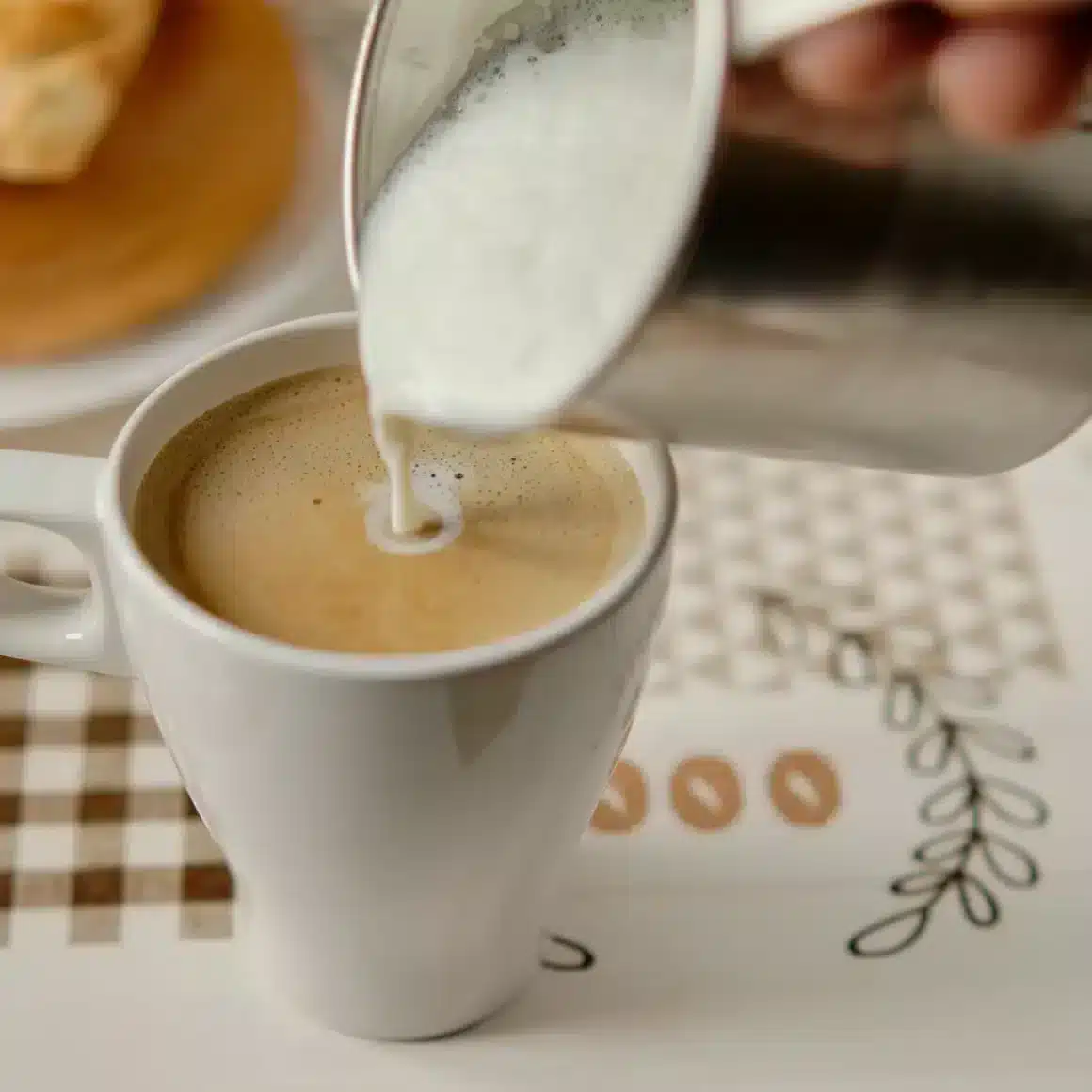
While both microfoam and traditional froth serve the purpose of adding a milky layer to coffee drinks, they are distinct in terms of texture, appearance, and application. Knowing these differences is crucial for anyone passionate about coffee.
- Bubble Size: Microfoam consists of much smaller bubbles compared to traditional froth, resulting in a smoother, silkier texture.
- Versatility: Microfoam’s unique attributes make it versatile for various espresso-based drinks, from flat whites to lattes, whereas traditional froth is usually reserved for cappuccinos.
- Complexity: Creating microfoam requires a more precise technique and is generally considered to be a mark of a skilled barista, whereas traditional froth is easier to produce but lacks the finesse that microfoam offers.
Understanding the differences between microfoam and traditional froth provides valuable insights into the nuances that contribute to the quality and complexity of your coffee experience.
The detailed exploration of microfoam’s history, importance in coffee art, and distinguishing characteristics reveals why it has become a staple in today’s coffee culture.
The Science Behind Perfect Microfoam
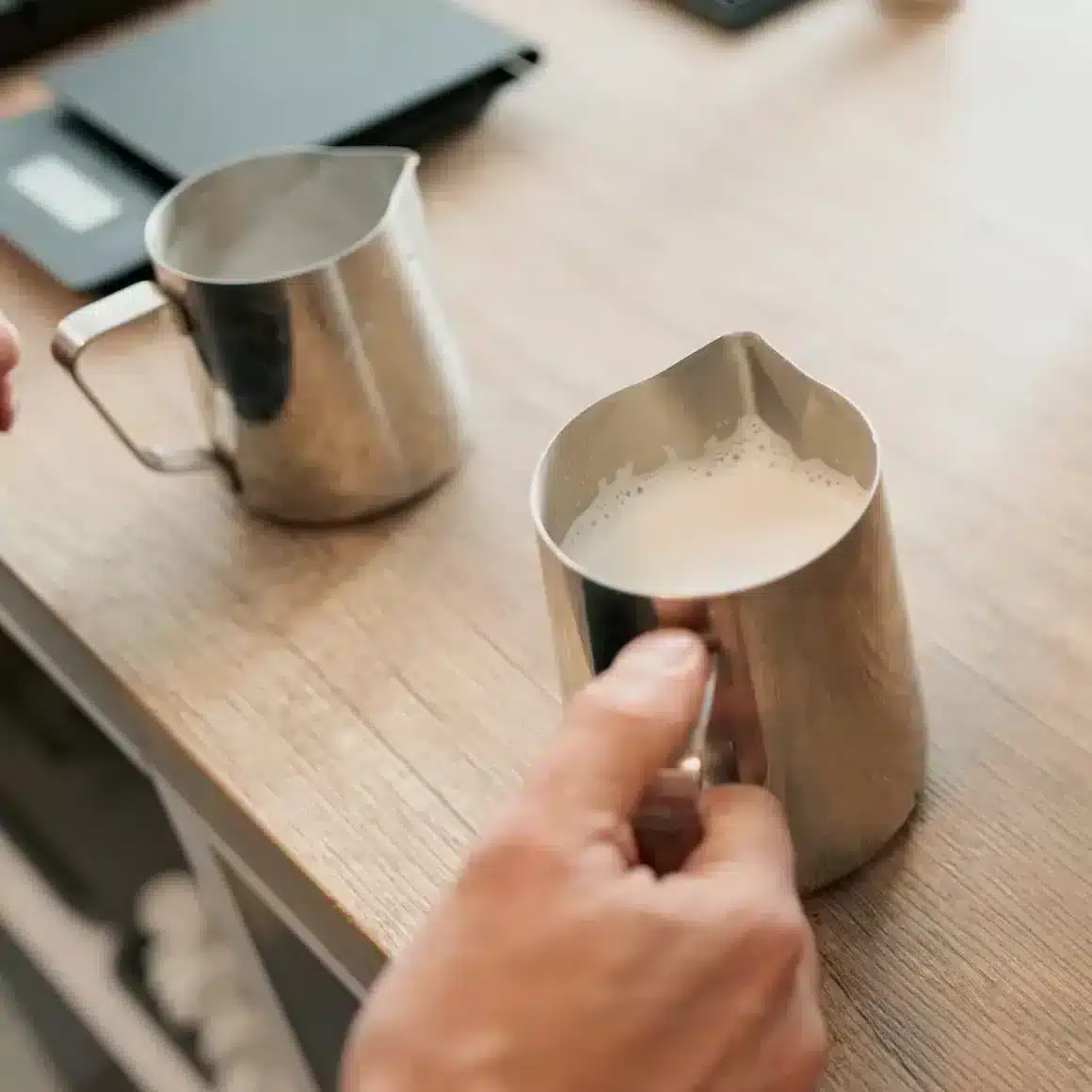
Creating perfect microfoam milk is a blend of art and science, involving numerous variables that must be precisely managed. From the milk’s composition to the temperature at which it’s steamed, each factor plays a crucial role in achieving that silky, luxurious latte foam. Here, we’ll dive into the specifics of what makes for an ideal microfoam.
Understanding Milk’s Composition
Starting off, it’s vital to examine the fundamental elements that constitute milk. The makeup of milk significantly influences both its foaming capability and the caliber of microfoam generated:
- Water: The primary component of milk, providing the liquid base.
- Proteins: Essential for foam stability, proteins interact with the milk’s fat and water content.
- Fats: Contribute to the richness and stability of the foam.
- Sugars: Lactose, the natural sugar in milk, adds a subtle sweetness. (2)
Understanding the balance between these components can help baristas perfect the foaming process, which begins by introducing air into milk via a steam wand. The quick yet gentle infusion of air results in small bubbles that lead to a delicate foam layer on the liquid surface.
How Temperature Affects Microfoam Consistency
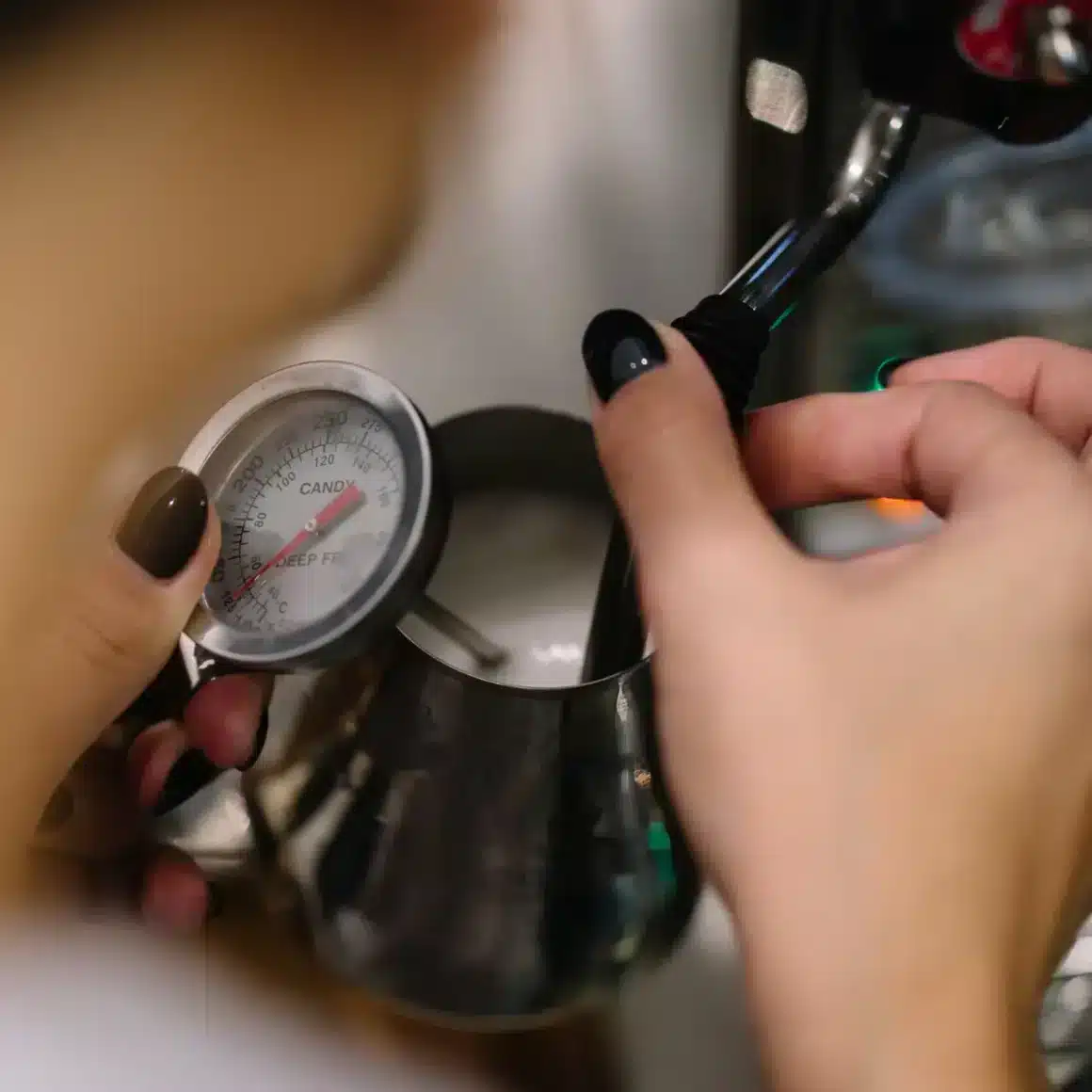
Temperature is a key variable in creating the best milk for microfoam. Here are some critical points to consider:
- Optimal Temperature: The milk should be heated to around 70°C (158°F), as higher temperatures may denature the proteins, affecting foam quality.
- Even Distribution: Achieving an even temperature throughout the milk is essential for uniform foam. This is done by submerging the steam wand slightly deeper into the milk, causing a whirlpool effect that integrates the foam with the liquid.
- Timing: Temperature control must be precise; it not only affects the foam’s texture but also its sweetness, as excessive heat can destroy lactose.
- Avoiding Overheating: Be cautious not to exceed the recommended temperature, as overheating can produce an undesirable burnt flavor and ruin the foam’s texture.
The Role of Fat Content in Foam Stability
Fat content is another significant factor that influences the quality and stability of microfoam. Here’s why:
- Fat Interactions: The fats in milk interact with air or steam, leading to the formation of microscopic bubbles. These bubbles are sturdy enough to maintain their form, even when mixed into the milk.
- Choice of Milk: The type of milk used can greatly affect foam stability. Whole milk usually offers the best results due to its higher fat content.
- Balancing Act: While fat contributes to a rich and stable foam, too much of it can make the foam heavier and less airy.
Creating the perfect microfoam involves a deep understanding of milk’s components, precise temperature control, and the thoughtful selection of milk based on fat content. When these elements are skillfully managed, the result is a luxurious and smooth latte foam that not only tastes great but also looks visually appealing.
Techniques and Tools for Achieving Perfect Microfoam

The quest for perfect microfoam milk involves not just the type of milk used but also the hardware and techniques employed. Fine-tuning the process might require attention to detail, but the effort is essential for creating espresso-based drinks with exquisite texture and visual appeal.
Selecting the Right Steam Wand
Choosing the appropriate steam wand is a crucial first step in the microfoam creation process. The wand can make a significant difference in the texture and quality of the foam.
- Know Your Beverage: The type of drink you’re planning to make impacts the size of the milk jug you’ll need. For a single latte or two cappuccinos, a larger pitcher (~600ml) is ideal. For just one cappuccino or flat white, a smaller pitcher will suffice.
- Purge the Wand: Before you start steaming, it’s necessary to clear the steam wand to ensure that it functions at its optimum.
- Fresh Milk: Always half-fill the jug with fresh milk. This ensures that the wand has enough room to aerate the milk properly.
Paying attention to the right steam wand and its operational settings sets the stage for excellent microfoam.
The Technique: Angles, Depth, and Motion
While hardware is essential, mastering the technique is equally important. Angles, depth, and motion during steaming can dramatically affect the texture of the foam.
- Angle of Wand: Slightly tilting the steam wand is advisable for effective steaming.
- Depth and Position: Initially, just the tip of the wand should be submerged below the milk surface. Later, you can go deeper for a more integrated texture.
- Monitor and Control: Keep an eye on the milk level in the pitcher. This helps you control the amount of foam being produced.
Your finesse with angles, depth, and motion can convert even the best milk for microfoam into a truly luxurious texture.
Troubleshooting Common Microfoam Mistakes
Even with the right tools and techniques, errors can occur. Knowing how to troubleshoot these mistakes is key to achieving that perfect foam.
- Temperature Check: The milk should be steamed to between 55-65°C. If the pitcher starts to feel too hot (~55-65°C), turn off the steam wand and check the temperature.
- Eliminate Tiny Bubbles: If you find small bubbles in the milk, a quick tap of the jug on the counter can help break them.
- Stir for Uniformity: After steaming, stir the milk to ensure that the foam is evenly distributed.
Troubleshooting common issues can be the final step in your journey towards creating flawless microfoam milk.
Incorporating Microfoam in Various Beverages
Microfoam isn’t just a luxurious add-on; it’s a versatile element that significantly enhances the texture and taste of various drinks. Whether you’re a coffee aficionado, a tea enthusiast, or someone who loves exploring international beverages, microfoam has a lot to offer.
The Art of the Latte and Cappuccino

The Latte and the Cappuccino are arguably the most popular beverages that showcase the elegance of microfoam. The quality of the microfoam can elevate these drinks from ordinary to extraordinary.
- Texture and Layering: In a latte, the microfoam creates a creamy texture, blending seamlessly with the espresso. For cappuccinos, as previously mentioned, the foam is thicker, providing a layer that contrasts with the robustness of the coffee beneath.
- Latte Art: The microfoam also serves as a canvas for latte art. The art not only adds visual appeal but also indicates the quality of the foam.
Mastering the art of integrating microfoam in lattes and cappuccinos allows baristas and enthusiasts alike to elevate their coffee experience to professional levels.
Microfoam in Non-Coffee Drinks

While coffee-based beverages like lattes and cappuccinos are microfoam staples, this frothy element is not exclusive to coffee. It has found its way into other drinks, adding richness and visual flair.
- Tea Lattes: Chai and matcha lattes, for example, are greatly enhanced with a layer of smooth microfoam, making the drink both comforting and sophisticated.
- Cold Drinks: Even iced beverages like frappés can include a microfoam layer, adding a different textural element that contrasts with the icy components.
The incorporation of microfoam in non-coffee drinks broadens the scope of culinary creativity, adding a touch of luxury to a wide range of beverages.
The Global Influence: Unique Beverages Featuring Microfoam
Microfoam has transcended borders, influencing traditional beverages globally. Its adaptability makes it a universal ingredient that enhances regional specialties.
- Australian Flat White: Originating from Australia, the flat white combines microfoam and espresso in a way that each complements the other, creating a balanced drink. (3)
- Spanish Leche Merengada: This Spanish classic, a frothy blend of milk, cinnamon, and lemon, is taken to the next level with the addition of microfoam.
- Japanese Matcha Latte: In Japan, where tea is an integral part of the culture, a matcha latte with microfoam is a modern twist on a traditional favorite.
The global reach of microfoam is a testament to its versatility and its capacity to enhance beverages from various cultural backgrounds.
Microfoam in Modern Café Culture

Microfoam has evolved from being a specialized skill practiced by a handful of baristas to a cornerstone in modern café culture. Its application goes beyond the simple pleasure of sipping a latte or cappuccino; it has cultural, competitive, and innovative dimensions that are shaping the café experience globally.
The Role in Coffee Competitions
In the competitive world of coffee, where the finest details can set a barista apart, microfoam plays a pivotal role. It’s not just about how good the coffee tastes, but also how well it’s presented, and microfoam is often the crowning glory.
- Judging Criteria: Competitions like the World Latte Art Championship rigorously evaluate the quality of microfoam. Parameters such as texture, stability, and integration with espresso are all points of assessment.
- Skill Display: Competing baristas often push the boundaries of what can be achieved with microfoam, showcasing advanced techniques and intricate latte art designs.
In the realm of competitive coffee making, mastering the science and art of microfoam is crucial for achieving distinction and recognition.
Microfoam as a Barista’s Signature
Just as chefs have signature dishes, many baristas have a signature style of microfoam. This becomes a part of their personal brand and often influences the popularity of the café they work at.
- Latte Art: While latte art is the most visible expression of a barista’s microfoam skill, the texture and quality of the foam itself can be an understated signature. A well-executed microfoam milk will have a creamy, velvety texture that complements the espresso perfectly.
- Customer Experience: Regular patrons often recognize and appreciate the consistency and style of their favorite barista’s microfoam, making it a defining factor in customer loyalty.
A barista’s unique touch in crafting microfoam can serve as a personal signature, enhancing both their individual brand and the café experience for customers.
Trends and Innovations in Microfoaming
As with any art form, the practice of creating microfoam is continuously evolving, thanks to both technological advancements and creative ingenuity from baristas.
- Technology: Newer espresso machines come with advanced steam wand technologies that allow even greater control over the microfoaming process, enabling the creation of different foam densities for diverse beverages.
- Flavored Foams: One of the latest trends is the infusion of flavors directly into the microfoam, adding an additional layer of complexity to drinks.
- Sustainability: Innovations also extend to finding the best milk for microfoam that is sustainable and plant-based, catering to an eco-conscious customer base.
Trends and innovations in the world of microfoaming are pushing the boundaries of what we know, making it an ever-evolving and exciting field to watch.
Conclusion
As we’ve journeyed through the complexities and nuances of microfoam milk, it’s evident that this silky companion to coffee is more than just a frothy topping. From understanding the science behind milk’s composition, temperature, and fat content to mastering the art of selecting the right tools and techniques, creating the perfect microfoam is both a skill and a craft.
This artistry extends to various beverages, becoming a staple in lattes, cappuccinos, and even non-coffee drinks. The presence of microfoam has also taken a center stage in modern café culture, be it in coffee competitions, as a barista’s signature, or in new trends and innovations, including the search for the best milk for microfoam.
So the next time you sip your favorite foamy beverage, take a moment to appreciate the craft that went into making that delectable microfoam. It’s a fascinating world, continually evolving and enriching our café experiences, one microscopic bubble at a time.
FAQ
How does the fat content in milk affect its ability to foam?
Higher fat content in milk generally results in creamier, more stable foam, while lower fat milk produces lighter, airier foam.
Why is microfoam preferred for latte art?
Microfoam is preferred for latte art due to its fine, silky texture that allows for precise and intricate designs.
What are the differences between microfoam and traditional frothed milk?
Microfoam consists of smaller, more uniform bubbles, resulting in a smoother texture, while traditional frothed milk has larger, less consistent bubbles, leading to a chunkier texture.
Are there milk alternatives that produce a similar microfoam texture?
Yes, plant-based alternatives like almond, oat, and soy milk can produce a similar microfoam texture, though the results may vary based on brand and fat content.





